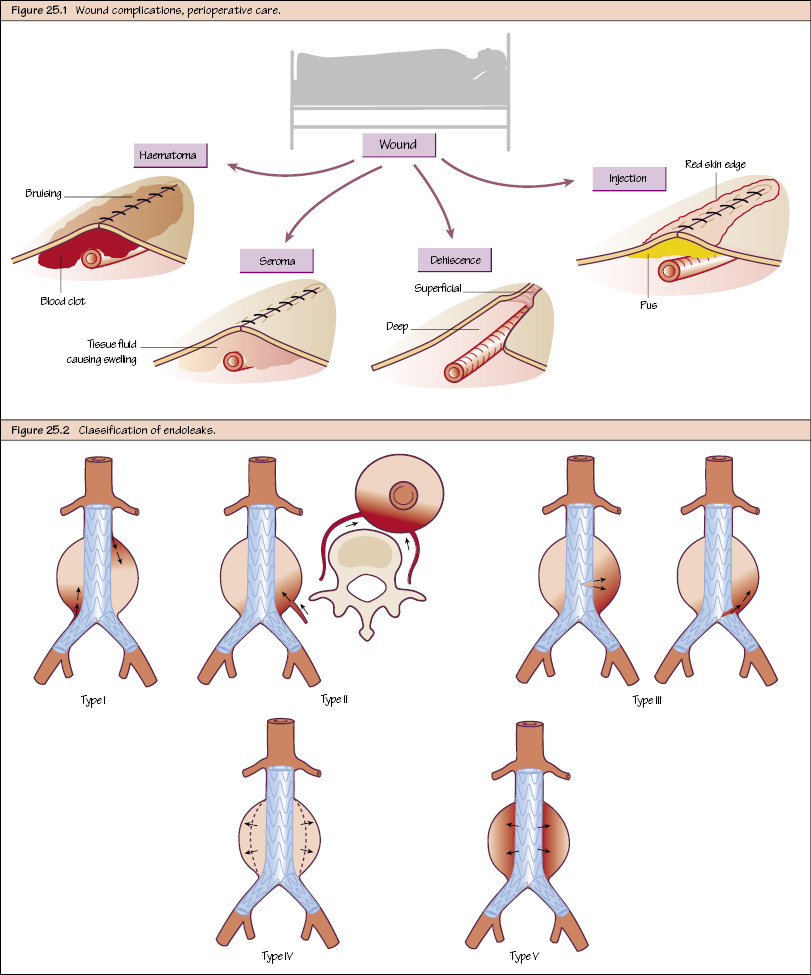Post-Operative Complications and Management As mentioned previously, vascular patients are at higher risk of post-operative MI – so take chest pain seriously. You will find the other general post-operative complications such as atelectasis, pneumonia, PE, renal failure, etc. in any other surgical textbook; here we deal with the specifics. One general risk to make a point of, though, is that vascular surgery is risky in terms of mortality: for instance, the risk during AAA repair is on average about 5%. All wounds can develop these, but those at highest risk are groin wounds, particularly if made vertically.

General
Wound Complications
Specific
Open AAA Repair
Stay updated, free articles. Join our Telegram channel

Full access? Get Clinical Tree


